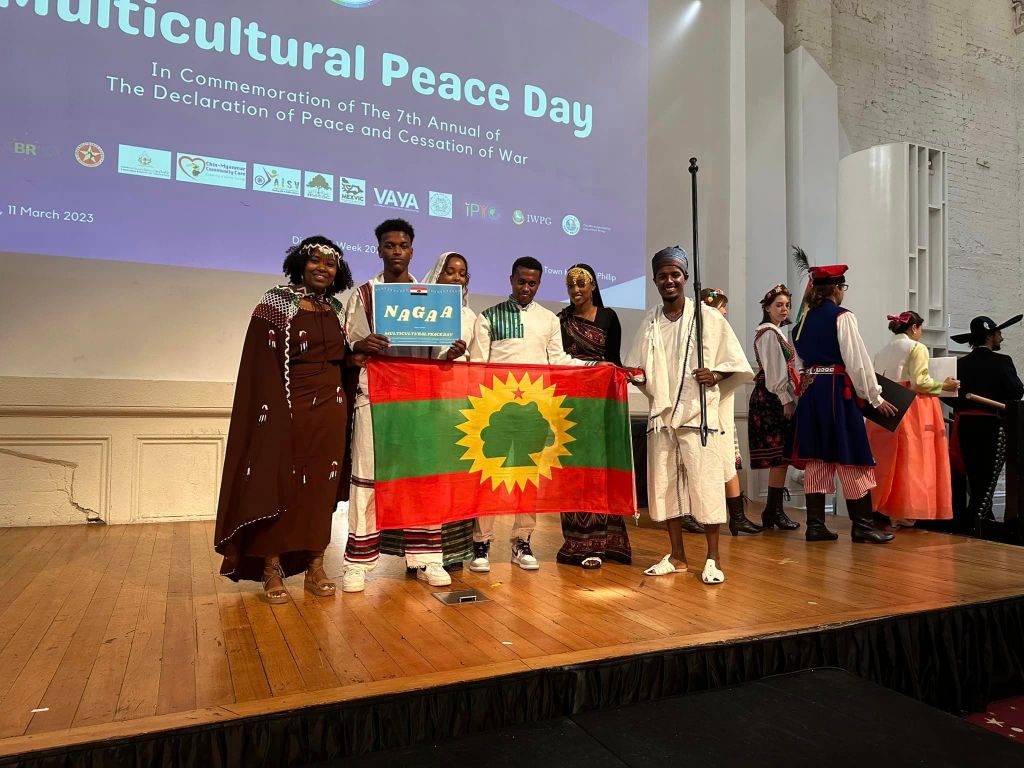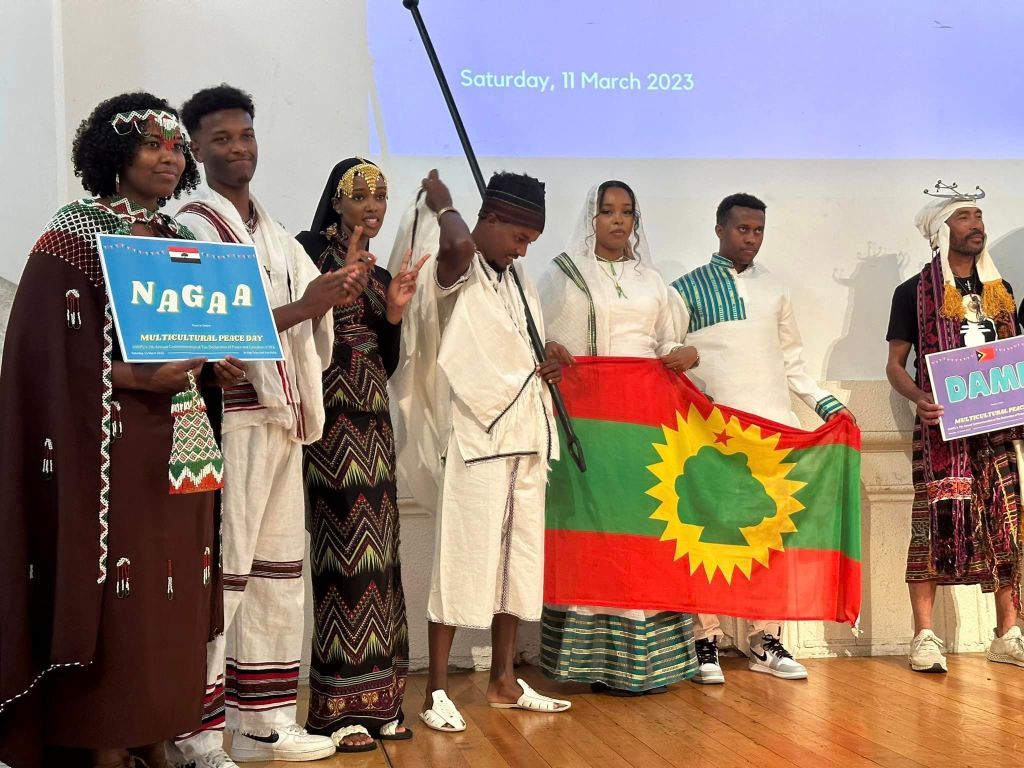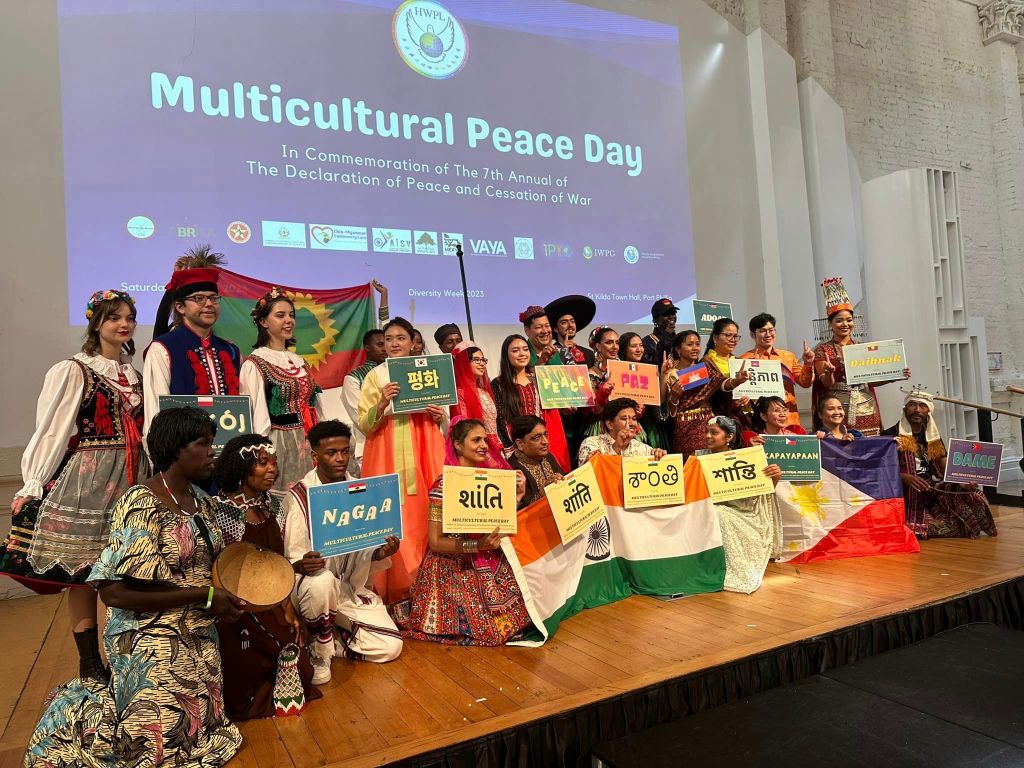Monthly Archives: March 2023
HWPL Peace Day message from Australian Oromo Youths
Peace and Harmony (fitting with the values and traditions of Oromummaa)

Acknowledgement
Soreti: We acknowledge and pay respect to this nation’s traditional owners and custodians
of past present and future. We would also like to thank HWPL for allowing us to have this
opportunity to come together to represent and share our culture. Today we have Magartu,
Arusa, Roba and myself, Soreti representing the Oromo community.
Nagaa
Today we are here to talk about Oromo culture and its alliance with peace and
harmony. The Oromo people have a rich history and traditions around maintaining peace
also known as “nagaa” in Afaan Oromo. The concept of “nagaa” is highly valued within the
Oromo community and is something we continuously fight for. Today we’re going to touch on
who the Oromo people are and the systems that were put in place to uphold nagaa within
Oromia.
Who are the Oromo people you may ask?
The Oromo people are a Cushitic ethnic group native to the Oromia region. We
are the largest ethnic group in the horn of Africa. Despite the large numbers Oromia’s history
is largely ignored and skewed and we hope to change that with occasions like today where
we can display our beautiful heritage and identity.
Oromia is considered the richest region of the Horn of Africa because of its abundant
agriculture and natural resources. For example, the Coffee, known worldwide today can
trace its heritage back to Jimmaa in the Oromia region. Coffee plays an important role in
fostering social unity within the Oromo community regardless of religious, economic, or
social boundaries.
Neighbours gather for coffee ceremonies where they would not only enjoy and
embrace each other’s company but also discuss and solve any conflict within the
community, to maintain peace and harmony.
Gadaa system
As mentioned, Oromia has many systems that are put in place to maintain “Nagaa”
or peace within the community. One of the most significant systems of governance is known
as “The Gadaa system”. The Gadaa system is a complex system of governance. This
system was the basis of Oromo culture. It helped Oromos maintain democratic, political,
economic, social, and religious institutions by dealing with conflict resolution, reparation and
protecting women’s rights for many centuries.
The Gadaa system has various institutes and procedures of conflict resolution and
mechanism of dealing with social and political issues. For example, “Guma” is a conflict
solution institute in which a person who inflicts loss or damage compensates the victim,
much like today’s legal system. This highlights how developed and forward the Oromos are
even centuries before today, in their ability to uphold peace and harmony within the
community.
In saying this however, today, the Oromo people are struggling for the opportunity to
rule themselves in a state that will reflect the Gada system. To be governed by a system that
upholds equal participation in social, economic, political, and religious aspects.
Oromo women
Oromo women had a parallel institution known as ‘Siinqee’. This institution promoted gender
equality in the Oromo society. Siinqee is an Afaan Oromo word that represents the stick a
married woman holds, given to her by her mother during the marriage ceremony.
An Oromo woman who carries Siinqee commands respect and can’t be touched or harmed.
Therefore, if a husband disrespects his wife, the women in the village gather holding siinqee
and singing until the elders meet to resolve the conflict.
Oromia flag and Odaa
The Odaa, which is a sycamore tree is a core symbol of the Oromo people and
Oromo land. The Odaa tree is unique for its immense durability and rapid growth and
expansive root system, making it perfect to be used as a representative symbol for the
Oromo people. Odaa is customarily believed to be the most respected and most sacred tree.
It is the central office of Gadaa government, where important meetings and ritual practices
were held by the Gadaa assembly. The odaa is also the central representation on the
Oromo flag we can see in front of us today.
Peace is not complete unless a harmonious relation with nature is maintained. This
shows Oromo people value and respect peace and coexistence. Oromo people established
harmony on norms and principles that respect peace (nagaa) and morals (safuu). Oromos
respect their elders and value social responsibility. Knowledge of history and culture is
admired.
Thank you for listening and thank you for having us today. Thank you for the opportunity to
tell our truth rather than the current narrative based on biased opinions.
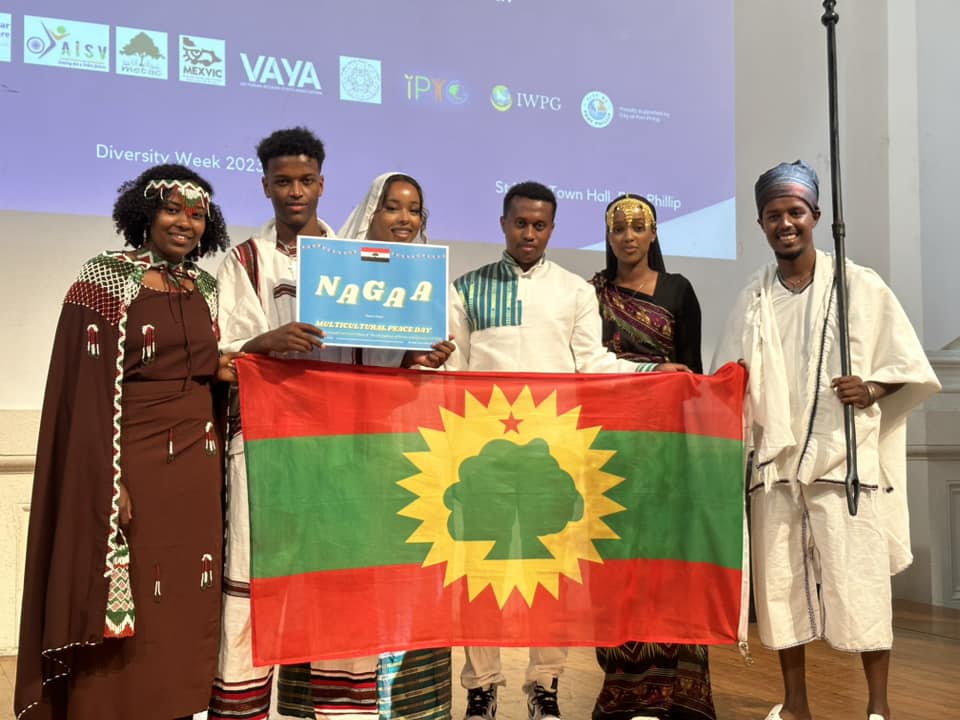
Australian Oromo youths promote Oromo and Oromia at the Multicultural Peace Festival.
(Melbourne, 11/03/2023) Melbourne Australian Oromo youths promote Oromo and Oromia at the Multicultural Peace Festival.
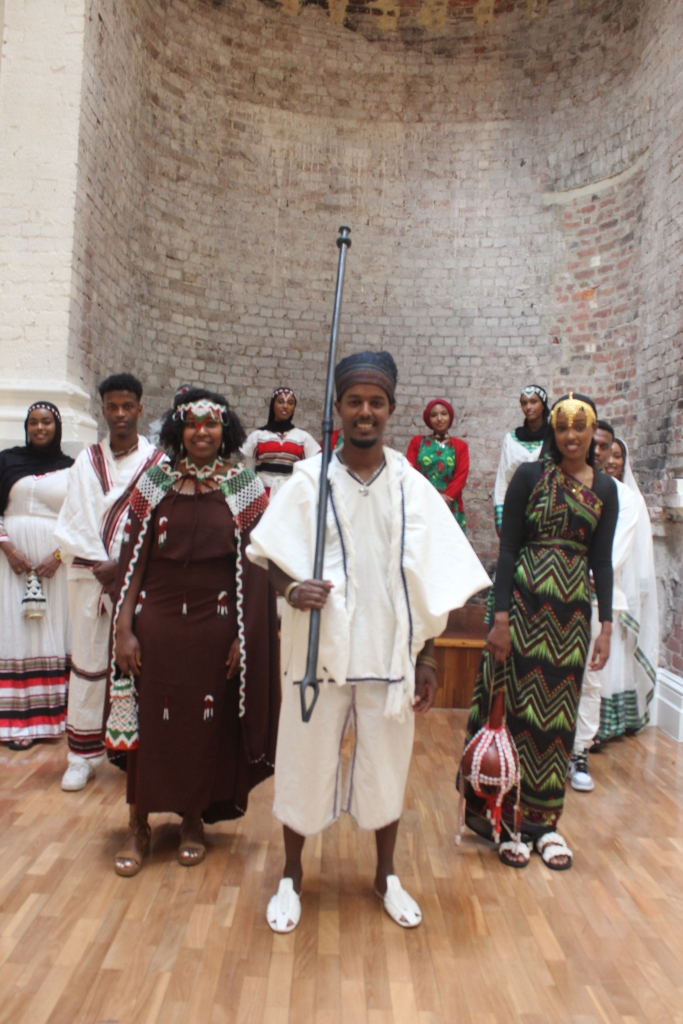
The Multicultural Peace Day was a celebration that brought different communities and cultures together in Melbourne.
As part of the 7th commemoration of the Declaration of Peace and Cessation of War (DPCW), HWPL invited communities, cultural groups to perform, share, celebrate each of their own cultures!
The Oromo youths who participated in the event wore Oromo clothes and ornaments and introduced on stage what Oromo have such as the Oromo culture of peace, Gada, conflict resolution under the Odaa and the Siinqee power, which protects women’s rights, and the tradition of respecting human rights.
In thier speech at the forum, the Oromo youth expressed that the Oromo people have great respect for peace. “There is a rich history and traditions around maintaining peace also known as “nagaa” in Afaan Oromo.
“The concept of peace is highly valued within the Oromo community and is something we continuously fight for.”
Heavenly Culture, World Peace, Restoration of Light (HWPL) is an international NGO committed to attaining the shared goal of humanity—establishing peace and ceasing wars.
Founded in 2013, Heavenly Culture, World Peace, Restoration of Light (HWPL) is a non-profit, non-governmental organization associated with the UN DGC and in consultative status with the UN ECOSOC.
HWPL is committed to the achievement of world peace and cessation of war through its main initiatives: enactment of an international law for peace, alliance of religions to promote interfaith harmony, and integration of peace education.
It has over 70 branches in Korea and another 100 branches around the world including the Philippines.



